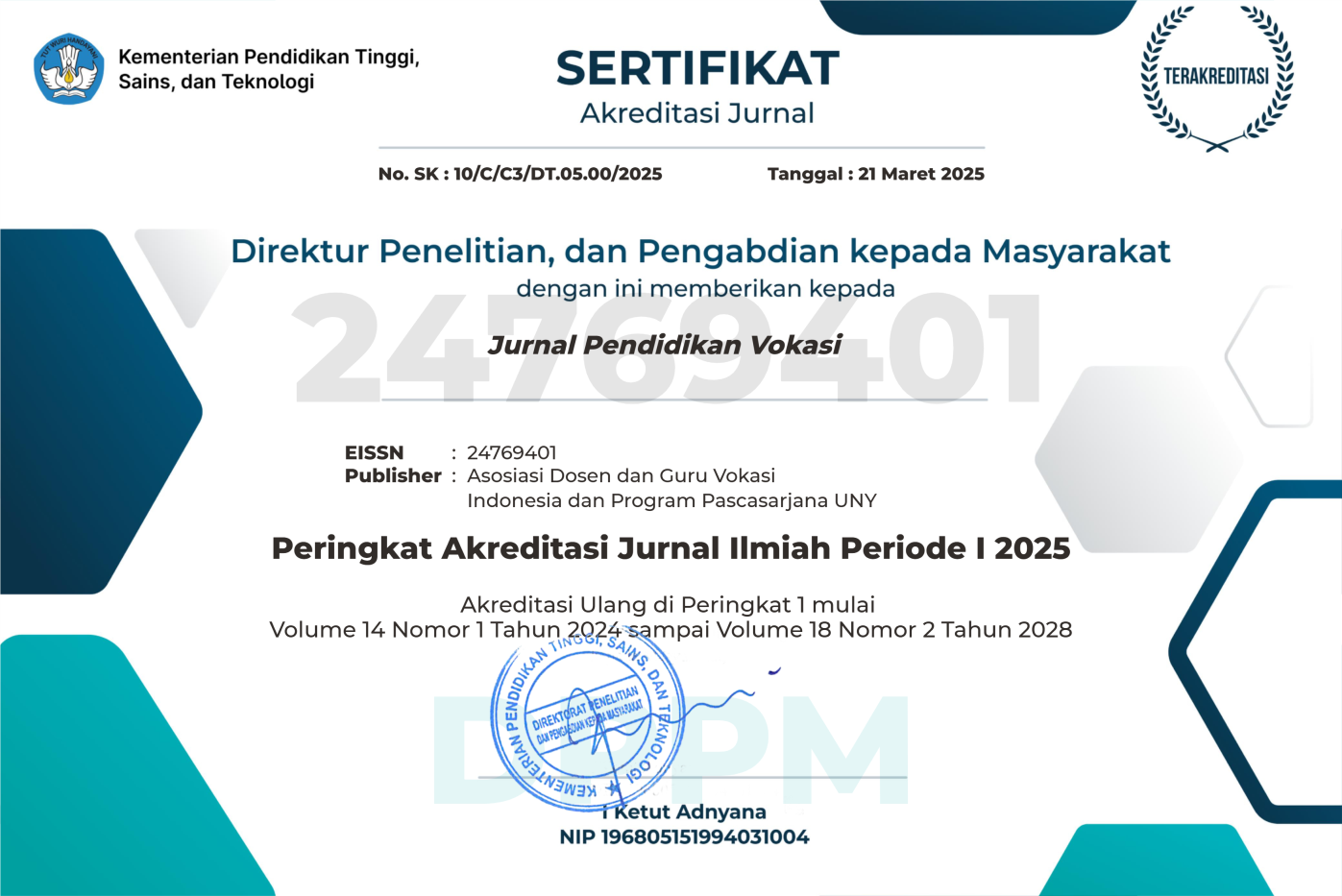Use of the Delphy Technique: a case for the development of ecotourism in western Lombok
DOI:
https://doi.org/10.21831/jpv.v9i1.23320Keywords:
expert judgment, entrepreneurship, ecotourism, consensus, Delphi techniqueAbstract
Delphi technique was developed in 1950 by researchers at the Rand Corporation led by Norman Delkey and Olaf Helmer and has since been used in hundreds of businesses forecasting in the public and private sectors. Delphi technique is a judgmental forecasting procedure for obtaining, exchanging, and developing an informed opinion about future events. Therefore, the Delphi technique is a systematic way to get a consensus of opinion among the experts who have related interests through a panel discussion. The objective of most Delphi is the reliable and creative exploration of ideas or the production of suitable information for decision making. The key features of the Delphi technique, namely: (1) systematic, (2) questionnaire, (3) expert judgment, (4) iteration process, and (5) feedback. Baseline characteristics of the Delphi technique (conventional) there are five, namely: (1) anonymity, (2) iteration, (3) controlled feedback, (4) statistical group response, and (5) expert consensus. While the characteristics of a policy Delphi also five, namely: (1) selective anonymity, (2) informed multiple advocacies, (3) polarized statistical response, (4) structured conflict, and (5) computer conferencing. Steps in the application of policy Delphi there are seven, namely: (1) issue specification, (2) selection advocates, (3) questionnaire design, (4) analysis of first-round results, (5) development of subsequent questionnaires, (6) organization of group meetings, and (7) preparation of final report.
References
Ario, D. (2010). Metode Delphi. Retrieved March 8, 2016, from http://dimasarioarumbinang.blogspot.com/2010/06/metode-delphi.html
Dunn, W. N. (1994). Public policy analysis: an introduction (2nd ed.). New Jersey: Pearson Education, Inc.
Foley, M. A. (1972). The Delphi technique: theory and applications. New Jersey: Prentice Hall, Inc.
Garrod, B. (2007). The Delphi technique. Wales: Institute of Rural Science, University of Wales Aberystwyth.
Jakaria, Y. (2009). Uji coba model (validasi). Jakarta: Pusat Penelitian Kebijakan dan Inovasi Pendidikan, Badan Litbang, Depdiknas.
Linstone, H. A., & Turoff, M. (1975). The Delphi method: techniques and applications. New York: Adison-Wesley.
Priyanto, L. D. (2010). Model pembelajaran vocational career center. Disertasi. Unpublished. Universitas Negeri Yogyakarta.
Putuwindra. (2012). Metode Delphi. Retrieved March 8, 2016, from https://izengdoankz.wordpress.com/2012/03/12/metode-delphi/
Soenarto. (1988). Needs assessment dalam pengembangan staf pengajar FPTK IKIP Yogyakarta. Yogyakarta.
Stufflebeam, D. L., & Shinkfield, A. J. (1985). Systematic evaluation a self-instructional guide to theory practice,. United State America: Kluwer-Nijhoff Publishing.
Susanto, I. (2011). Teknik Delphi (Delphi technique). Retrieved March 8, 2016, from http://cio-indo.blogspot.com/2011/11/teknik-delphi-delphi-technique.html
Syafruddin. (2010). Teknik Delphi dalam penelitian. Retrieved March 8, 2016, from http://teomokole.blogspot.com/2010/10/t eknik-delphi-dalam-penelitian.html
Weaver, B. R. (1971). Assessment needs in educational and social programs. San Francisco: Jossey-Bass Publishers.
Downloads
Published
How to Cite
Issue
Section
Citation Check
License
The authors submitting a manuscript to this journal agree that, if accepted for publication, copyright publishing of the submission shall be assigned to Jurnal Pendidikan Vokasi. However, even though the journal asks for a copyright transfer, the authors retain (or are granted back) significant scholarly rights.
The copyright transfer agreement form can be downloaded here: [JPV Copyright Transfer Agreement Form]
The copyright form should be signed originally and sent to the Editorial Office through email to jpvokasi@uny.ac.id
Jurnal Pendidikan Vokasi by http://journal.uny.ac.id/index.php/jpv is licensed under a Creative Commons Attribution-ShareAlike 4.0 International License.












